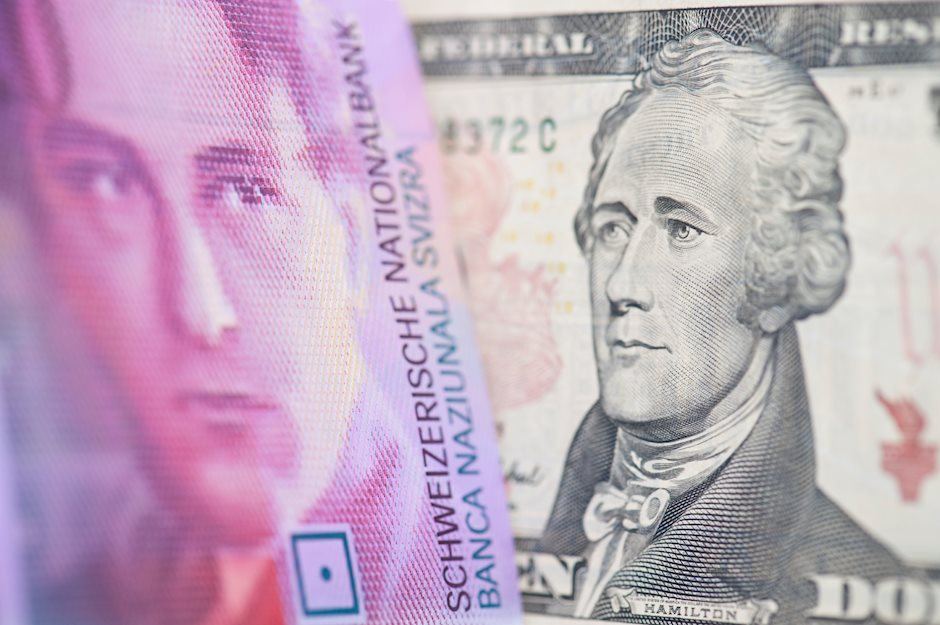USD/CHF dips toward 0.8650 as the US Dollar weakens amid lower Treasury yields
- USD/CHF depreciates as the US Dollar loses ground amid lower Treasury yields.
- The recent poll indicated that Kamala Harris and Donald Trump are locked in a close contest across seven battleground states.
- The 10-year Swiss bond yield falls toward 0.38% due to rising expectations of more aggressive rate cuts by the SNB.

USD/CHF retraces its recent gains from the previous session, trading around 0.8650 during the European session on Monday. The US Dollar faces downward pressure as subdued Treasury yields follow Friday's weaker-than-expected US Nonfarm Payrolls report.
The US Dollar Index (DXY), which measures the value of the US Dollar against its six major peers, trading around 103.80 with 2-year and 10-year yields on US Treasury bonds standing at 4.17% and 4.31%, respectively, at the time of writing.
On the data front, the US Bureau of Labor Statistics (BLS) indicated that October’s Nonfarm Payrolls increased by only 12,000, following a revised September gain of 223,000 (down from 254,000), which fell well short of market expectations of 113,000. Meanwhile, the Unemployment Rate remained steady at 4.1% in October, matching the consensus forecast.
Traders are closely watching the upcoming US presidential election on Tuesday, as the final New York Times/Siena College poll showed Democratic candidate Kamala Harris and Republican nominee Donald Trump are locked in a close contest across seven battleground states on Sunday. The focus will shift to the US Federal Reserve (Fed) policy decision, with expectations of a modest 25 basis point rate cut later this week.
The yield on the 10-year Swiss government bond dropped toward 0.38%, its lowest level since early October, as expectations grew for more substantial rate cuts by the Swiss National Bank (SNB). This shift follows a continued slowdown in Switzerland's inflation, with the Consumer Price Index (CPI) falling 0.6% year-over-year in October, below the 0.8% forecast and marking the slowest rate of increase since July 2021.
Swiss inflation has not risen since April, and October's figure came in well below the SNB’s fourth-quarter inflation forecast of 1%. This raises the likelihood that the SNB may consider a larger rate cut in December to keep inflation within its target range of 0-2%, signaling concerns over potential economic softening.
Swiss Franc FAQs
The Swiss Franc (CHF) is Switzerland’s official currency. It is among the top ten most traded currencies globally, reaching volumes that well exceed the size of the Swiss economy. Its value is determined by the broad market sentiment, the country’s economic health or action taken by the Swiss National Bank (SNB), among other factors. Between 2011 and 2015, the Swiss Franc was pegged to the Euro (EUR). The peg was abruptly removed, resulting in a more than 20% increase in the Franc’s value, causing a turmoil in markets. Even though the peg isn’t in force anymore, CHF fortunes tend to be highly correlated with the Euro ones due to the high dependency of the Swiss economy on the neighboring Eurozone.
The Swiss Franc (CHF) is considered a safe-haven asset, or a currency that investors tend to buy in times of market stress. This is due to the perceived status of Switzerland in the world: a stable economy, a strong export sector, big central bank reserves or a longstanding political stance towards neutrality in global conflicts make the country’s currency a good choice for investors fleeing from risks. Turbulent times are likely to strengthen CHF value against other currencies that are seen as more risky to invest in.
The Swiss National Bank (SNB) meets four times a year – once every quarter, less than other major central banks – to decide on monetary policy. The bank aims for an annual inflation rate of less than 2%. When inflation is above target or forecasted to be above target in the foreseeable future, the bank will attempt to tame price growth by raising its policy rate. Higher interest rates are generally positive for the Swiss Franc (CHF) as they lead to higher yields, making the country a more attractive place for investors. On the contrary, lower interest rates tend to weaken CHF.
Macroeconomic data releases in Switzerland are key to assessing the state of the economy and can impact the Swiss Franc’s (CHF) valuation. The Swiss economy is broadly stable, but any sudden change in economic growth, inflation, current account or the central bank’s currency reserves have the potential to trigger moves in CHF. Generally, high economic growth, low unemployment and high confidence are good for CHF. Conversely, if economic data points to weakening momentum, CHF is likely to depreciate.
As a small and open economy, Switzerland is heavily dependent on the health of the neighboring Eurozone economies. The broader European Union is Switzerland’s main economic partner and a key political ally, so macroeconomic and monetary policy stability in the Eurozone is essential for Switzerland and, thus, for the Swiss Franc (CHF). With such dependency, some models suggest that the correlation between the fortunes of the Euro (EUR) and the CHF is more than 90%, or close to perfect.
Author

Akhtar Faruqui
FXStreet
Akhtar Faruqui is a Forex Analyst based in New Delhi, India. With a keen eye for market trends and a passion for dissecting complex financial dynamics, he is dedicated to delivering accurate and insightful Forex news and analysis.

















